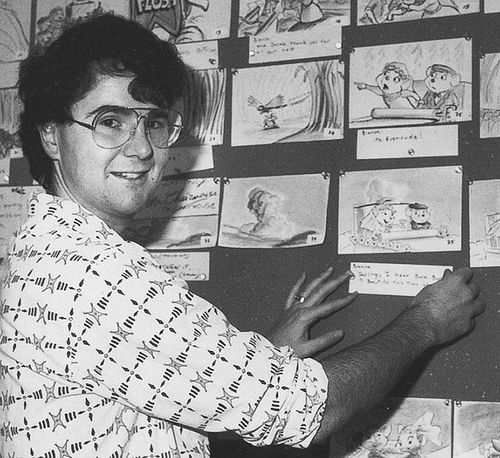The photo above depicts Joe Ranft organising one of many storyboards for Disney Pixar.
Researching story boarding is certainly relevant to our project is it could save us time when filming, as we will have prepared an array of sketches that represent camera angles that we project to film, and will therefore allow us more time to edit/re-film certain scenes. We are going to devise a storyboard with annotations, that is meticulous and takes into account every camera angle/editing techniques we are going to use.
Storyboarding will benefit us greatly in our task, if we have a clear plan as to what we want to shoot, it will make filming more concise and therefore we have more time to edit. The storyboard can be a short sequence of pictures, or an intricate and comprehensive plan that includes almost every shot the director intends to use.
Storyboarding will benefit us greatly in our task, if we have a clear plan as to what we want to shoot, it will make filming more concise and therefore we have more time to edit. The storyboard can be a short sequence of pictures, or an intricate and comprehensive plan that includes almost every shot the director intends to use.

No comments:
Post a Comment